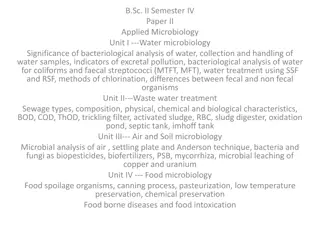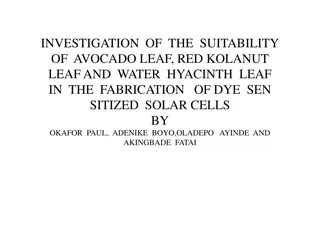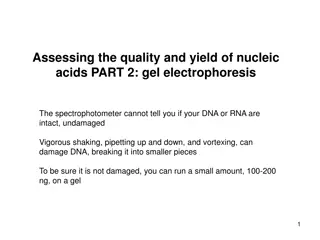Stains and Dyes in Microbiology: Understanding Chromophore and Auxochrome
Stains and dyes play a crucial role in microbiology by imparting color properties through chromophore and electrolytic dissociation through auxochrome. Learn about the classification, components, and function of stains and dyes in this insightful presentation.
Download Presentation

Please find below an Image/Link to download the presentation.
The content on the website is provided AS IS for your information and personal use only. It may not be sold, licensed, or shared on other websites without obtaining consent from the author.If you encounter any issues during the download, it is possible that the publisher has removed the file from their server.
You are allowed to download the files provided on this website for personal or commercial use, subject to the condition that they are used lawfully. All files are the property of their respective owners.
The content on the website is provided AS IS for your information and personal use only. It may not be sold, licensed, or shared on other websites without obtaining consent from the author.
E N D
Presentation Transcript
Topic :- Stains and dyes Presented by Ms. Priyanka H. Giri Department of Microbiology Deogiri College, Aurangabad 1
Microbiological techniques and general microbiology Ms. Priyanka H. Giri. 15/08/2020
Content: Stains, Dyes, classification of stains 1. Acidic stains 2. Basic Stains 3. Neutral stains
Stains and dyes A stain or dye may be defined as an organic compound containing both chromophore and auxochrome groups attached to benzene ring. A chromophore group imparts to the compound the property of color. An auxochrome imparts the property of electrolytic dissociation. Also a coloring agent used for general purpose is called dye and a coloring agent used for biological purpose is called stain. Eg. Dye: coal, tar stain: saffranin, crystal violet etc.
Chemically a stain or dye consists of three components: A. Benzene ring B. Chromophore group C. Auxochome group
Chromophore Chromo: means color A chromophore group imparts to the compound the property of color although chromophore group is colored. It is unable to stain the object alone.
Auxochrome Auxochrome must be associated with the chromophore. Auxochrome imparts to the chromophore compound the property of electrolytic dissociation.
Chromogen Some compounds of benzene which contain chromophore radicals are called cromogen. Such a compound even coloured, is not a stain, as it neither possesses affinity for microorganisms. for eg: trinitro benzene is yellow colored compound and is a chromogen.
Classification of stains On the basis of charge present on the stain molecule after electrolytic dissociation, stains are divided into three classes: Acidic stains 2. Basic stains 3. Neutral stains 1.
1. Acidic stains Acidic stains are those that show negative charge on the chromophore parts after ionization. (usually COOH or OH group). for eg: Eosine is chemically sodium+ eosinate-. chromophore part eosinate is negatively charged, and so eosine is acidic stain. Other examples of acidic stains are Nigrosine, India ink, rose bengal, Congo red and picric acid.
Acidic stain color basic components like cytoplasmic elements of the cell. They usually used to stain area of slide around the cell i.e. background.
2. Basic stains Basic stains are those that show positive charge on the chromophore part after ionization. for eg: Methylene blue+ chloride- chromophore part methylene blue is positively charged, and so methylene blue is basic stain.
Other examples of basic stains are Crystal violet, Saffranin, Basic fuchsin, Carbol fuchsin, Sudan black B and Malachite green. The basic stains are widely used in microbiology laboratories. They are used to color the cells, nucleic acids and metachromatic granules.
3. Neutral stains Neutral stains are those that show both negative and positive charge on the chromophore part after ionization. for eg: Giemsa s stain is chemically Methylene blue+ eosinate-. Other examples of neutral stain are Leishman s stain, Wright s stain Jenner s stain and other blood stains. Neutral stains are used to stain nuclear material or nucleus.























